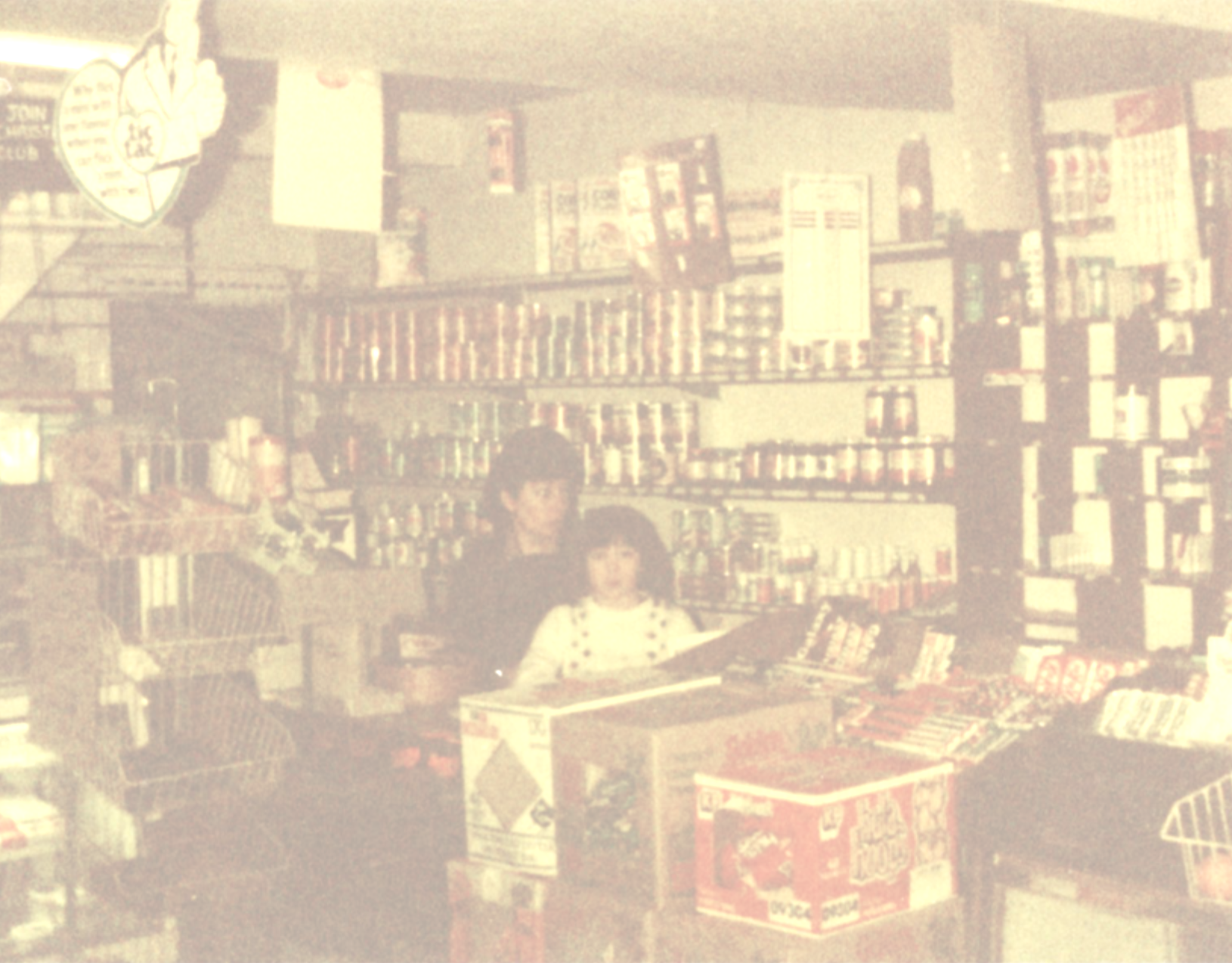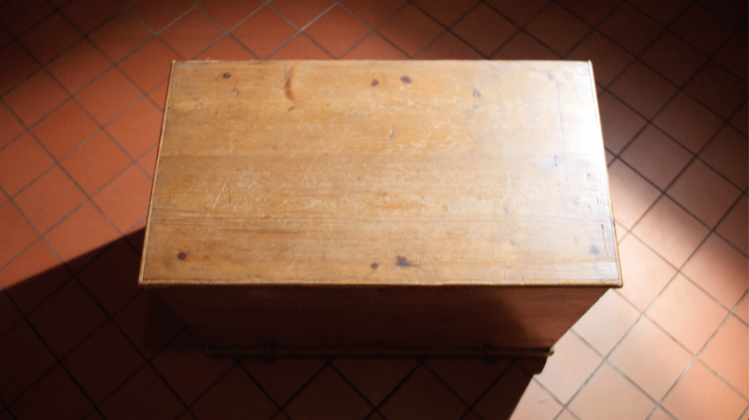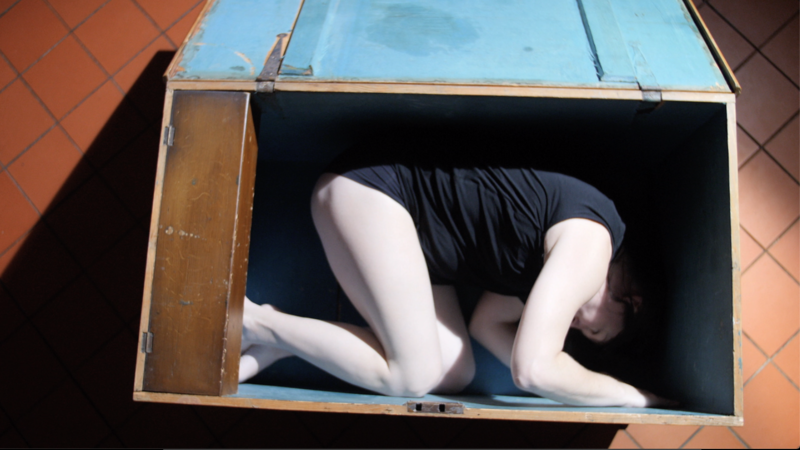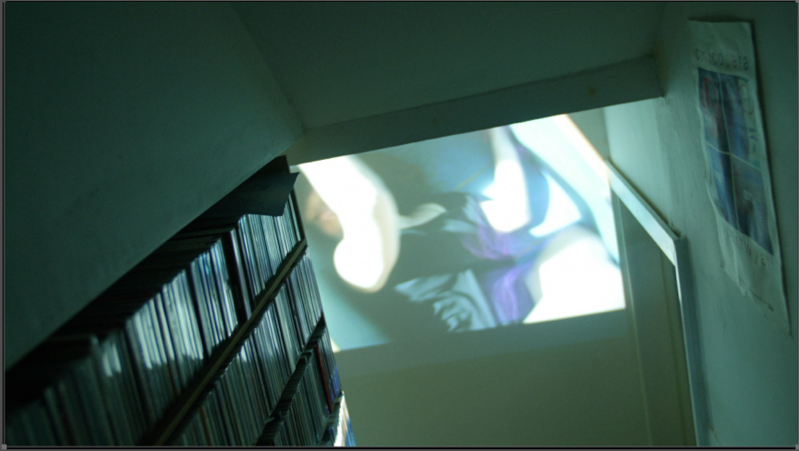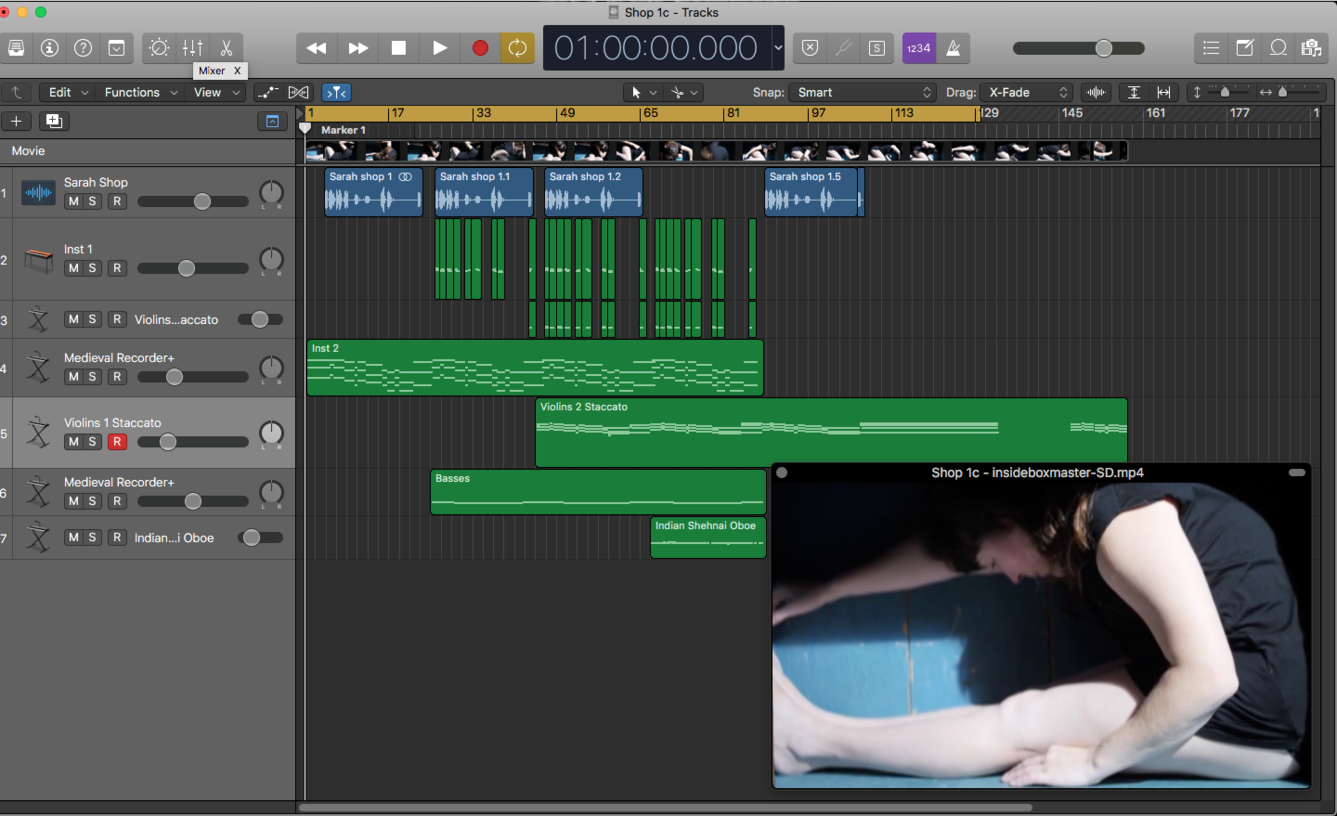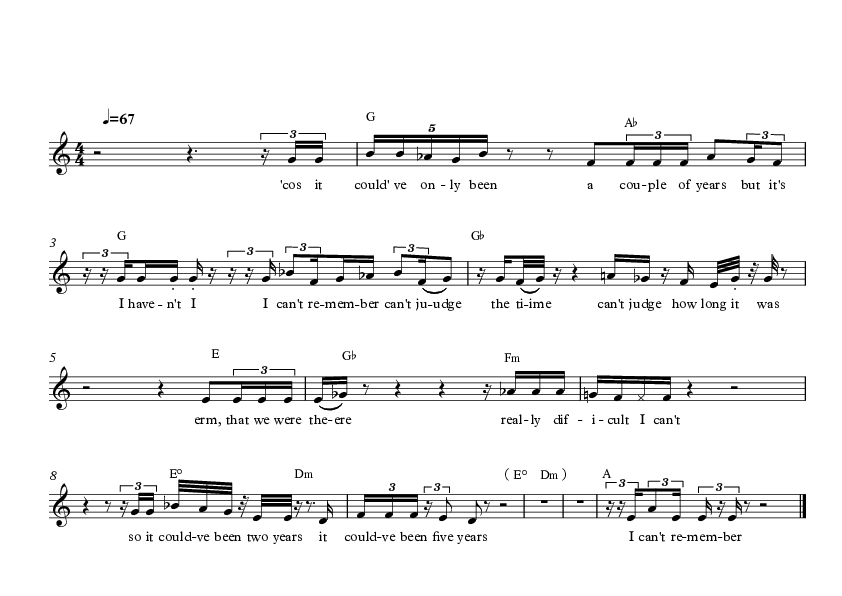This page is dedicated to a particular narrative in Sarah's storyline for 31 Days Old. In this section, Andy and Sarah focus on the development of a piece called The Box, which was derived from the image below. In particular, this section identifies the collaborative ways Sarah and Andy work. Andy reveals his perspective as a composer and his approach to working with family.
Two versions of The Box were created. Inside the Box and Outside of the Box. Both were seen in the final performance in the home.
I worked through the notion of space, the texture of the counter, the narrow walkway behind the counter, negotiating small spaces and stepping over boxes, careful not to knock things over. This is an image and a memory of a specific place and time, but I cannot remember for how long….
I set the work in a large linen box. I developed a repetitive score,
how could I fit into this space, explore its corners, shift and turn, a visual representation of how uncertain and uncomfortable it was.
The process of developing music for The Box was derived from a fragment of speech taken from an interview I conducted with Sarah about a particular time in her childhood. The irregularity of pitch and rhythm in the clip reflects the uncertainty with which Sarah remembers the events, in particular she cannot remember when this happened.
I have attempted a transcription of this, although in reality the process of harmonisation happened by ear. I imported the audio into my audio editor to analyse the pitches, allotting them a musical voice and then playing chords along with the midi transcription to determine a chord sequence. This is by no means an objective process as the pitches of the speech are not absolute, as noted by Scott Johnson who’s 1986 album John Somebody uses a similar technique. He writes;
“…the pitches and rhythms of the finished voice tracks are approximate, and achieve their sense of being in time and in tune only when surrounded by the instruments…I started by analyzing the found vocal phrases for approximate pitch and rhythmic content and then shaped them by editing to bring out the musical regularities which my ear imposed on these spontaneous sounds” (Johnson 1986).
Although Sarah’s voice is not actually edited only looped (the distances between the words and phrases are as she spoke them) it is true that my transcription of the pitches and rhythms are a product of my own habits as a composer and also what I may know about the subject of the speech – Sarah is my wife and I am aware of the back story and its underlying issues. However, The Box has major differences from Johnson’s work, which is a stand-alone composition. The Box was a response to visual (initially the photograph and then the film) as well as aural information (the sound clip), and was designed to be heard in a very specific situation (under the stairs).
Responding to the pitches I started on a G major which, after a brief upward motion to Ab major, begins a steady descent into uncertainty. Gb major next and from there try E major (no, that’s not the one) return to Gb. Try F minor. Not much more positive. Next, an awkward cadence – E diminished to D minor (no, that’s not right!). With A major she accepts defeat – “I don’t remember”. These chords are heard along with the voice, attempting to make sense of the haphazard pitch material. In fact, each chord stands alone, having little connection with the one before or after.
My intention here is not to present words as explicit narrative but rather to explore the music of uncertainty. The pitches I derived from the speech clip were a springboard from which I concocted the chord structure instinctively, and further textural and arrangement ideas came from seeing the film material which is itself figurative.
The speech fragment was chosen because it created a break in the story. As a composer I am drawn to these moments, finding the music of the speech at times of spontaneous hesitation often reveals a greater truth than the words spoken.
This unstable construction accompanied two films, which we called Inside The Box and Outside The Box. The film The Box was projected on one wall of the cupboard under the stairs. An audience member was invited to sit in the tiny space with the door shut to watch the film and I positioned the speakers very close to the head on either side, with the audio quite quiet but very clear and detailed. I chose not to use headphones for this as I did not want the listener to become completely disconnected with the rest of the house – other people were moving around from room to room and particularly up and down the stairs. Outside The Box was situated on a small stairwell at the top of the house. The viewer had to sit on the stairs with the music positioned behind them, to further the idea of encapsulation
After all the interviews were conducted and the materials gathered, Andy and I listened to the chosen narratives. We began to isolate phrases and sections into themes and stories.
Sarah - Can we keep the feel of the telling?
Andy – Yes, sometimes we’ll hear the whole story but sometimes we’ll focus on sections of speech with false starts, repetitions and interruptions, when you can hear the struggle to remember. These can be the basis for the larger pieces - your solo?
Sarah - Yes, ok - but at the same time we need to keep the speaker’s original meaning and intention. There are many perspectives in our stories… which build a shared picture of a family, but we have to be careful about what we reveal
Andy –Yes, but we don’t have to hear the words at all sometimes. We can use the music of the speech to create the themes.
Sarah – Right ok, yes, and scores for solo work, - all the narratives need to hang together and overlap.
Andy – do you mean in the house?
Sarah – Yes, installed into the house, but knitted together in themes and narratives… for example we have the birth stories text….
Andy – Yes, it’d be good to hear those but maybe they’re playing all at the same time and you have to move closer to each one physically to focus in on that particular story. And you’re right, we need to position the pieces throughout the house so that those close together can exist together when you’re standing in between them.
